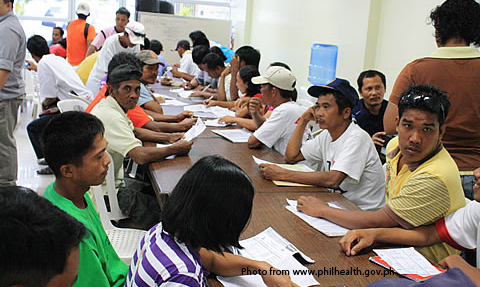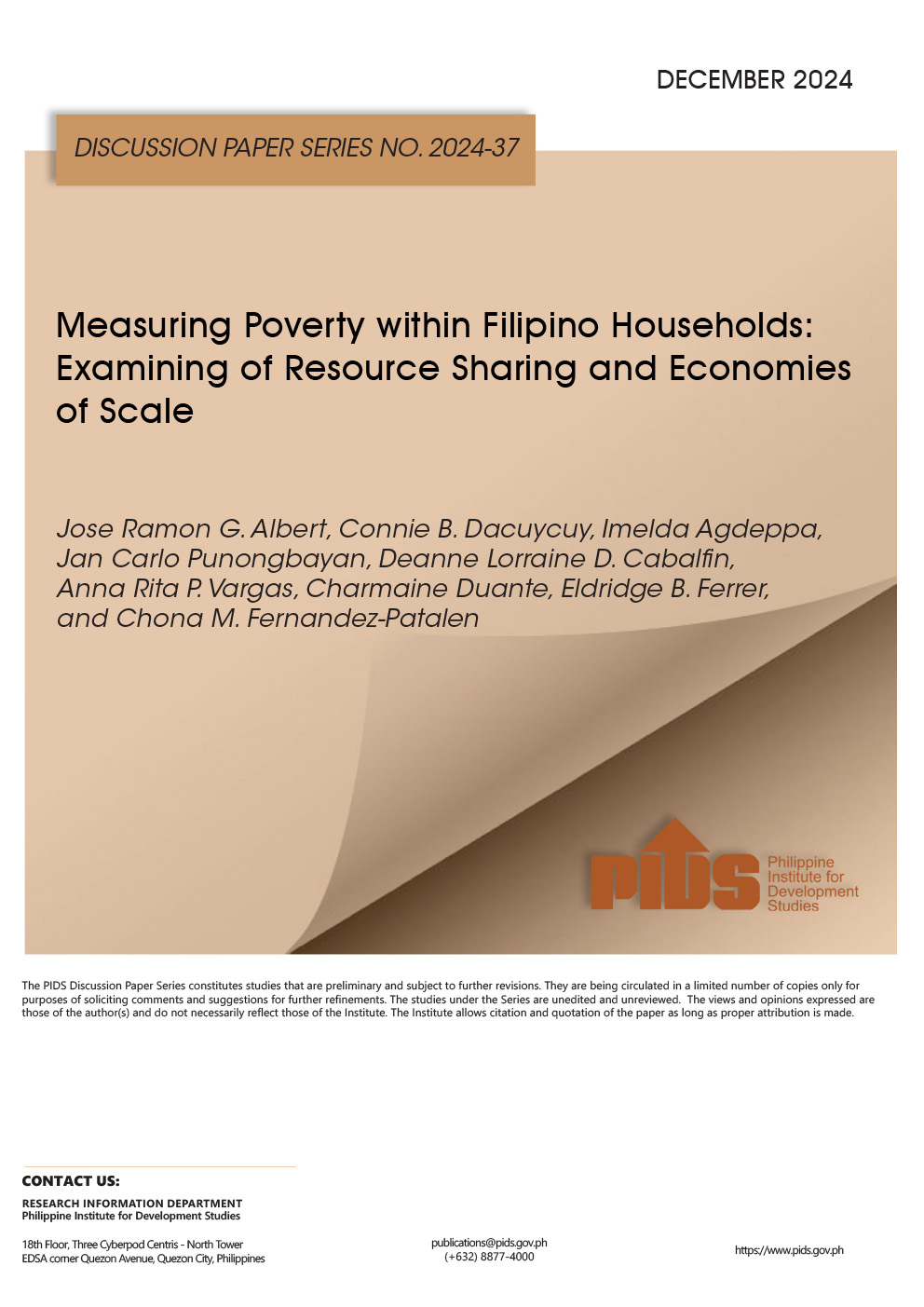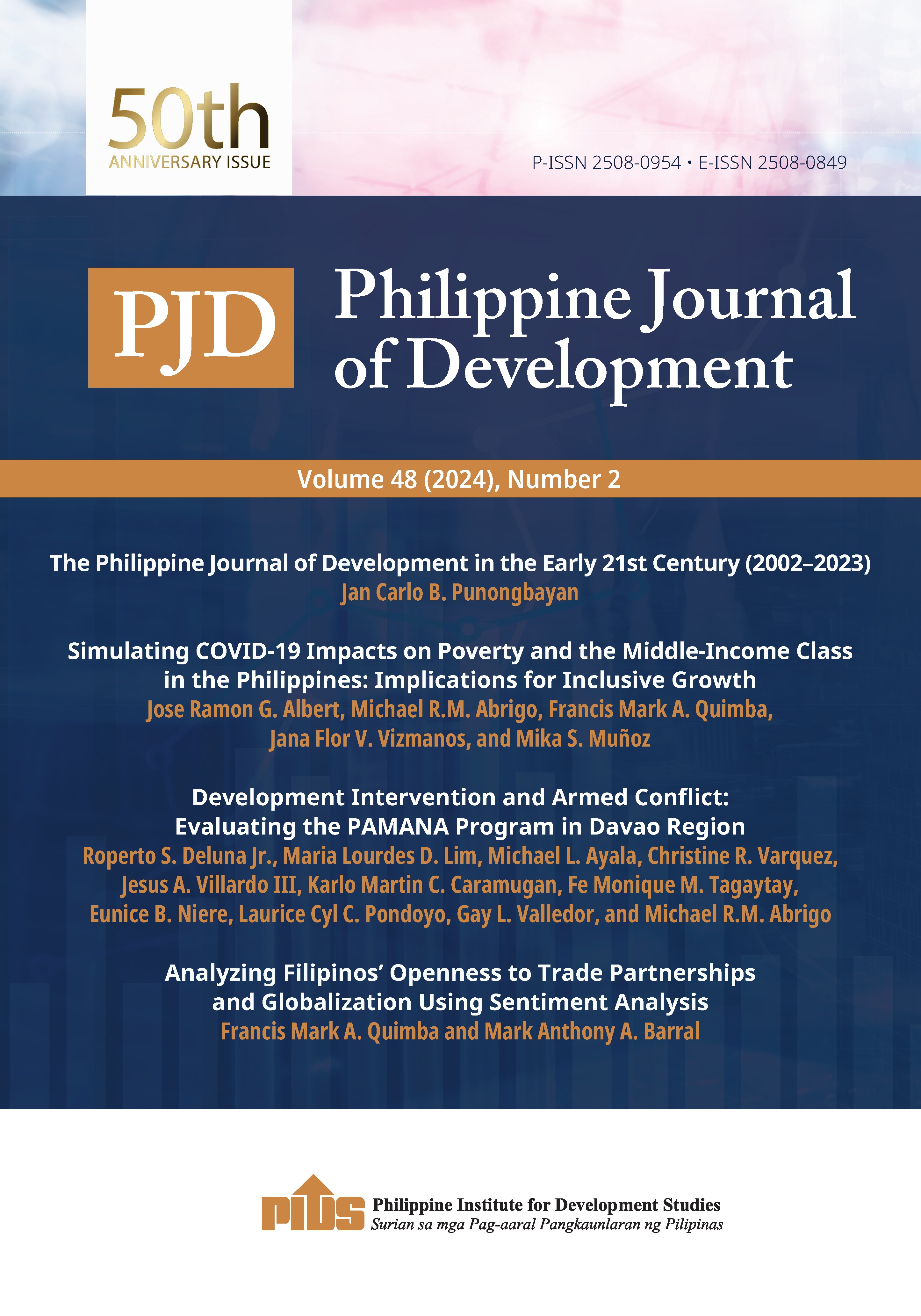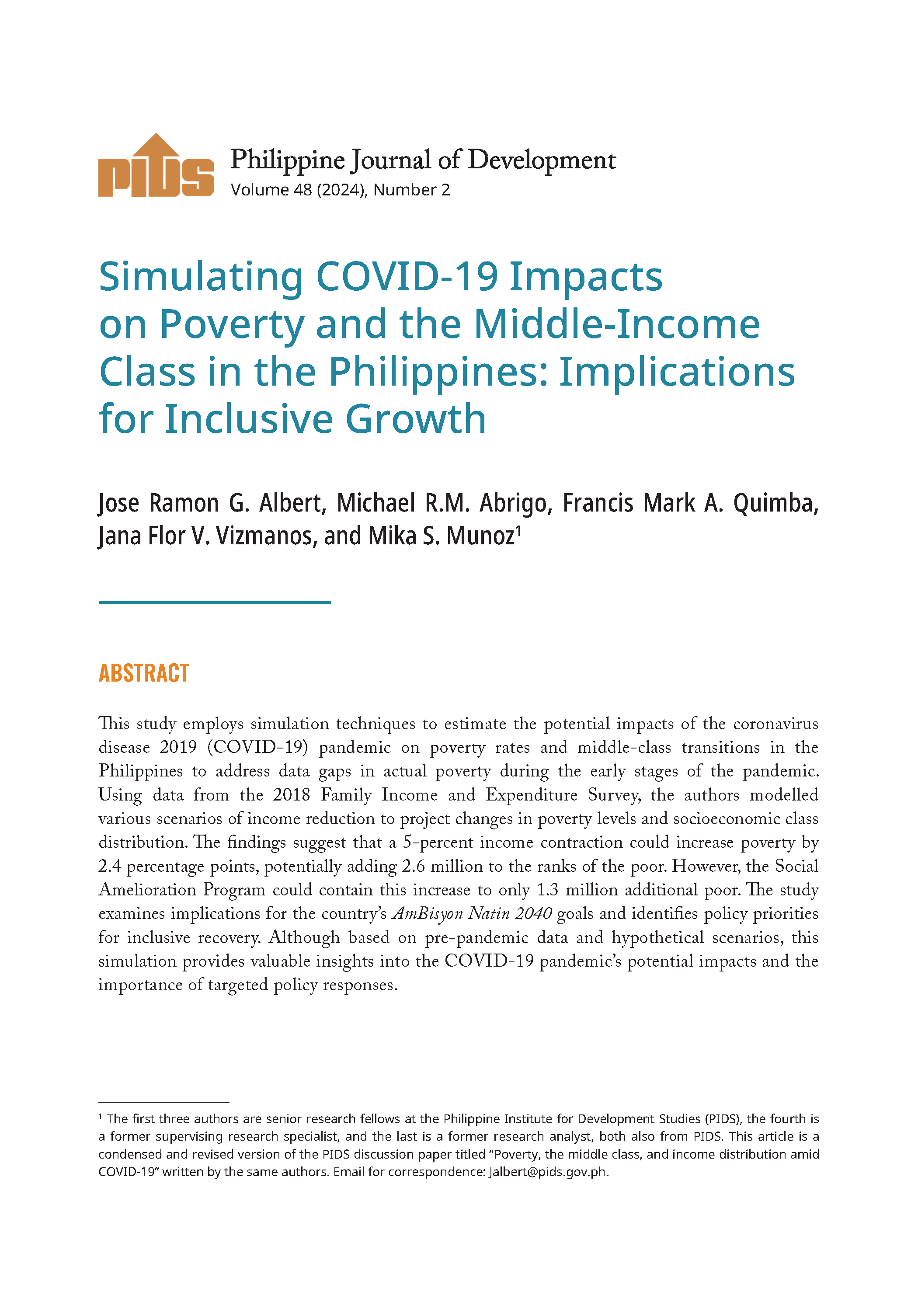
The Department of Social Welfare and Development (DSWD) needs to improve the documentation and strengthen its information technology systems to further enhance the implementation of its pro-poor programs.
These were among the major findings of the Philippine Institute for Development Studies in its evaluation of the DSWD’s Convergence Strategy. The Convergence Strategy is a major undertaking of the agency to address poverty through the harmonized implementation of its three major programs: Kapit-bisig Laban sa Kahirapan Comprehensive and Integrated Delivery of Social Services (KALAHI-CIDSS), the Pantawid Pamilyang Pilipino Program (4Ps), and the Sustainable Livelihood Program (SLP).
The authors of the study, PIDS Senior Research Fellows Jose Ramon Albert and Connie Dacuycuy, emphasized the importance of looking into whether the implementation of the DSWD’s Convergence Strategy is working according to its design. This is to ensure that the achievement of the intended outcomes of social protection programs, which is to build resilience and empower the poor to have better chances in improving their plights, is maximized.
One of the major findings of the study was the lack of proper documentation of the project. Thus the authors suggested for DSWD to take stock of documents and update them.
“While organizational structures at DSWD were defined at the onset for carrying out the Convergence Strategy, whatever changes in structures, nomenclatures, and roles were not systematically documented,” the researchers pointed out.
In particular, Albert and Dacuycuy noted that the Tatsulo Manual, which defines the organizational structure of the Convergence Strategy in the central office and field offices at the regional, provincial, and city or municipal levels has never been updated to reflect the organizational dynamics at DSWD, nor included nomenclature changes in convergence structures since it was first published in 2011.
They recommended that documentation must include more specific guidelines on who does what, and what specific office/unit/leader has oversight functions. Likewise, the role of every team member in the national, regional, provincial, and city/municipal convergence structures should be described.
Meanwhile, the authors also stressed the importance of aligning business processes to improve coordination, collaboration, and complementation of efforts, programs, and services under the KALAHI-CIDSS, 4Ps, and SLP.
“Processing of documents is centralized in some regions. Also, the lack of innovation in financial management contributes to delays that hamper project implementation on the ground,” Albert and Dacuycuy noted. Thus, they proposed DSWD to develop an online financial management system to help address administrative bottlenecks.
The researchers also suggested to reduce caseloads and increase manpower to improve management of resources.
“High caseloads prevent a more focused and more personalized delivery of services to the beneficiaries. Likewise, current processes and systems pertaining to travel and related expenses make fieldwork more challenging,” they commented.
In addition, the PIDS study maintained that the success of the convergence efforts depends largely on the human resources of the Department and on their appreciation of the Convergence Strategy. Hence, they urged that investments in human resource development are necessary to make the staff involved in the project responsive and adaptive to emerging situations and issues for the welfare of beneficiaries.
Lastly, the researchers highlighted the important role of local government units (LGUs) in achieving positive results for the Convergence project. They maintained the success of the external convergence efforts crucially depends on how municipal LGUs seriously commit to the action plans. For instance, Albert and Dacuycuy cited the fragmented support that the 4Ps is getting from municipal LGUs, with some municipalities having positive views about 4Ps while others are difficult to tap for support.
The evaluation study conducted by PIDS looks into the organizational structures, business processes, and capacity development of DSWD’s Convergence Strategy. Evaluations, including this process evaluation study, are important to know what works and what does not, so that the Department can make synergistic changes in its business processes to improve the quality of its service delivery. ###
This press release is based on a PIDS Discussion paper, “Evaluation and Assessment of the Effectiveness of the DSWD Internal and External Convergence as Operationalized by the Regional, Provincial, and City/Municipality Action Teams”.
These were among the major findings of the Philippine Institute for Development Studies in its evaluation of the DSWD’s Convergence Strategy. The Convergence Strategy is a major undertaking of the agency to address poverty through the harmonized implementation of its three major programs: Kapit-bisig Laban sa Kahirapan Comprehensive and Integrated Delivery of Social Services (KALAHI-CIDSS), the Pantawid Pamilyang Pilipino Program (4Ps), and the Sustainable Livelihood Program (SLP).
The authors of the study, PIDS Senior Research Fellows Jose Ramon Albert and Connie Dacuycuy, emphasized the importance of looking into whether the implementation of the DSWD’s Convergence Strategy is working according to its design. This is to ensure that the achievement of the intended outcomes of social protection programs, which is to build resilience and empower the poor to have better chances in improving their plights, is maximized.
One of the major findings of the study was the lack of proper documentation of the project. Thus the authors suggested for DSWD to take stock of documents and update them.
“While organizational structures at DSWD were defined at the onset for carrying out the Convergence Strategy, whatever changes in structures, nomenclatures, and roles were not systematically documented,” the researchers pointed out.
In particular, Albert and Dacuycuy noted that the Tatsulo Manual, which defines the organizational structure of the Convergence Strategy in the central office and field offices at the regional, provincial, and city or municipal levels has never been updated to reflect the organizational dynamics at DSWD, nor included nomenclature changes in convergence structures since it was first published in 2011.
They recommended that documentation must include more specific guidelines on who does what, and what specific office/unit/leader has oversight functions. Likewise, the role of every team member in the national, regional, provincial, and city/municipal convergence structures should be described.
Meanwhile, the authors also stressed the importance of aligning business processes to improve coordination, collaboration, and complementation of efforts, programs, and services under the KALAHI-CIDSS, 4Ps, and SLP.
“Processing of documents is centralized in some regions. Also, the lack of innovation in financial management contributes to delays that hamper project implementation on the ground,” Albert and Dacuycuy noted. Thus, they proposed DSWD to develop an online financial management system to help address administrative bottlenecks.
The researchers also suggested to reduce caseloads and increase manpower to improve management of resources.
“High caseloads prevent a more focused and more personalized delivery of services to the beneficiaries. Likewise, current processes and systems pertaining to travel and related expenses make fieldwork more challenging,” they commented.
In addition, the PIDS study maintained that the success of the convergence efforts depends largely on the human resources of the Department and on their appreciation of the Convergence Strategy. Hence, they urged that investments in human resource development are necessary to make the staff involved in the project responsive and adaptive to emerging situations and issues for the welfare of beneficiaries.
Lastly, the researchers highlighted the important role of local government units (LGUs) in achieving positive results for the Convergence project. They maintained the success of the external convergence efforts crucially depends on how municipal LGUs seriously commit to the action plans. For instance, Albert and Dacuycuy cited the fragmented support that the 4Ps is getting from municipal LGUs, with some municipalities having positive views about 4Ps while others are difficult to tap for support.
The evaluation study conducted by PIDS looks into the organizational structures, business processes, and capacity development of DSWD’s Convergence Strategy. Evaluations, including this process evaluation study, are important to know what works and what does not, so that the Department can make synergistic changes in its business processes to improve the quality of its service delivery. ###
This press release is based on a PIDS Discussion paper, “Evaluation and Assessment of the Effectiveness of the DSWD Internal and External Convergence as Operationalized by the Regional, Provincial, and City/Municipality Action Teams”.












